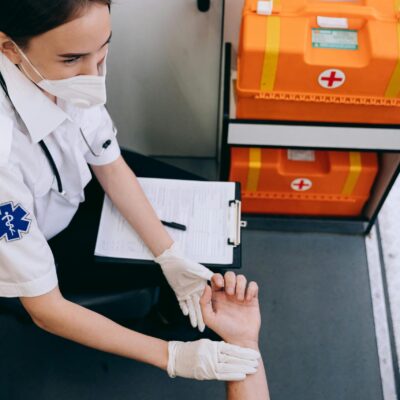
But seriously, people will often ask if there is more than one type of seizure. The answer is yes and each one is unique (you know, like snowflakes…) which is annoying because it makes them that much more difficult to treat.
This story is part of the Epilepsy Blog Relay™.
There are different types of seizures?
Yes, there are more than 40 known types of seizures a person may experience. A few of them are discussed below. There are also what are now referred to as epilepsy syndromes.
Types of Seizures
For the most part, seizures can be classified based on where in the brain the epileptic activity starts.
Generalized Seizures
Generalized seizures result from epileptic activity in both halves of the brain. Below are four major types of generalized seizures: tonic-clonic, absence, myoclonic, and atonic.
- Tonic-Clonic: This type is what is commonly recognized as a seizure. As the name implies, it is split into two phases: the tonic and the clonic. In the tonic phase, the person will lose conscious and may fall to the floor. The body goes stiff as the muscles contract, and the person may cry out. Due to a lack of oxygen, the blood tends to be less red than normal, so the skin may turn blue. After the tonic phase, the clonic phase will begin. The muscles begin to tighten and relax in a cycle that results in jerking limbs. The person may lose control of his or her bladder. After the seizure (post-ictal state), the person’s muscles will relax and the body goes limp. Consciousness will slowly return, but the person may appear confused and may not be able to remember the seizure. This can last anywhere from a few minutes to several days. Recovery varies from person to person, but generally involves sleeping for a certain period of time.
- Absence Seizures: When a person has an absence seizure, he or she loses consciousness for a few seconds. This can look like a person daydreaming, so these tend to be harder to spot. It is possible for a person with epilepsy who has this type of seizure to have upwards of one hundred absence seizures in the span of a day.
- Myoclonic Seizures: Myoclonic seizures cause the muscles in the body to jerk. This can include the whole body, but the jerking is usually isolated to the limbs or neck and shoulders, and generally occurs on both sides at the same time. The person is unconscious for a brief period of time, but may not notice it. Myoclonic seizures can be mild or can be associated with the more extreme forms of epilepsy such as Lennox-Gastaut syndrome.
- Atonic Seizures: Contrary to the muscle stiffness experienced during tonic seizures, atonic means “without tone”, so the person will lose all muscle function and fall to the floor. These are usually very brief and the person can generally stand up quickly without experiencing confusion. For more information on atonic seizures, visit Epilepsy Action’s website.
Focal (Partial) Seizures
Unlike generalized seizures, focal seizures affect one area (generally one lobe) of the brain. During a focal seizure, a person may be able to remain alert, but can still be confused as to what is happening. Below are examples showing symptoms of seizures specific to the temporal and frontal lobes.
- Seizures in the Temporal Lobes: The temporal lobes contain functions such as hearing, speech, memory, and emotions, so symptoms of seizures in this area can vary greatly. Commonly, a person experiencing a focal seizure in the temporal lobe can be flushed or go very pale. He or she may see distorted objects or things that are not actually there. Additionally, smelling non-existent smells or tasting non-existent tastes can occur. The list of symptoms is very long, but these seizures can generally be identified by sensory experiences or emotions that seem out of place along with an inability to clearly process location or emotions.
- Seizures in the Frontal Lobes: The frontal lobes contain functions including movement, emotions, and language. Typically, frontal lobe seizures result in very outward displays including stiffness of the limbs, thrashing arms, and crying out. Furthermore, the person may have problems forming or understanding speech. Sometimes these seizures may be incorrectly diagnosed as a condition other than epilepsy due to their dramatic appearances. For more information on frontal lobes, click here.
Don’t miss tomorrow’s story in the Epilepsy Blog Relay™.









Leave a Reply